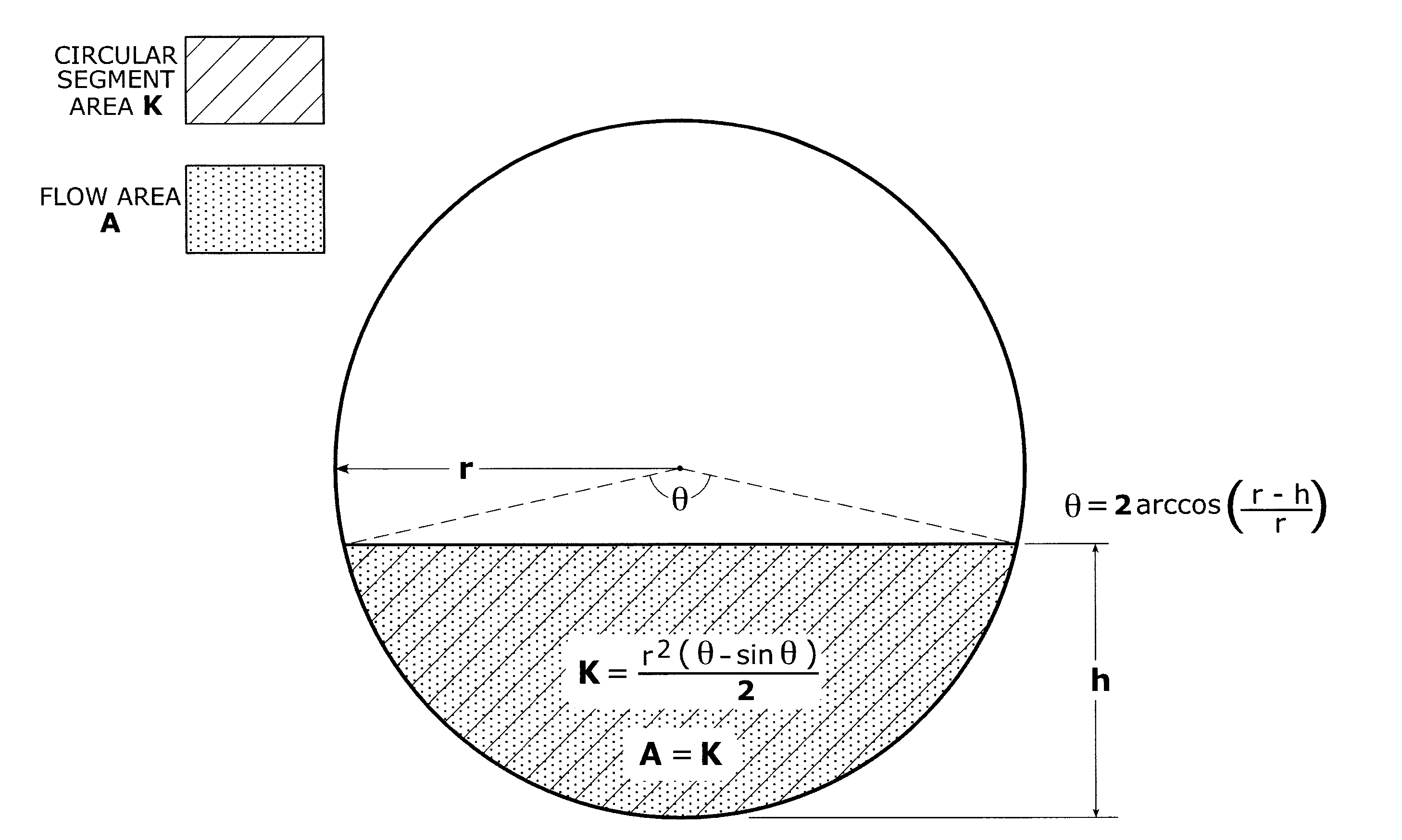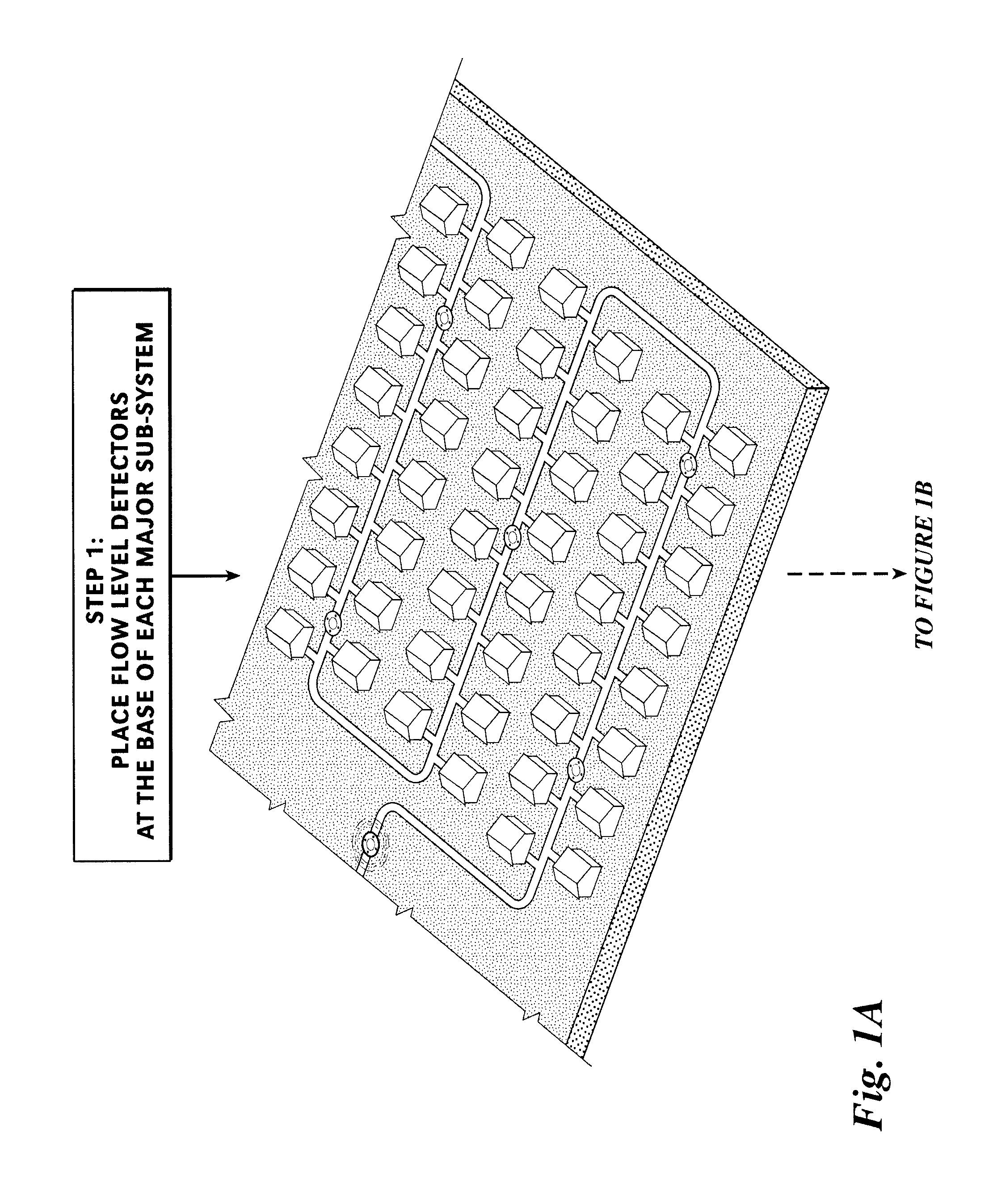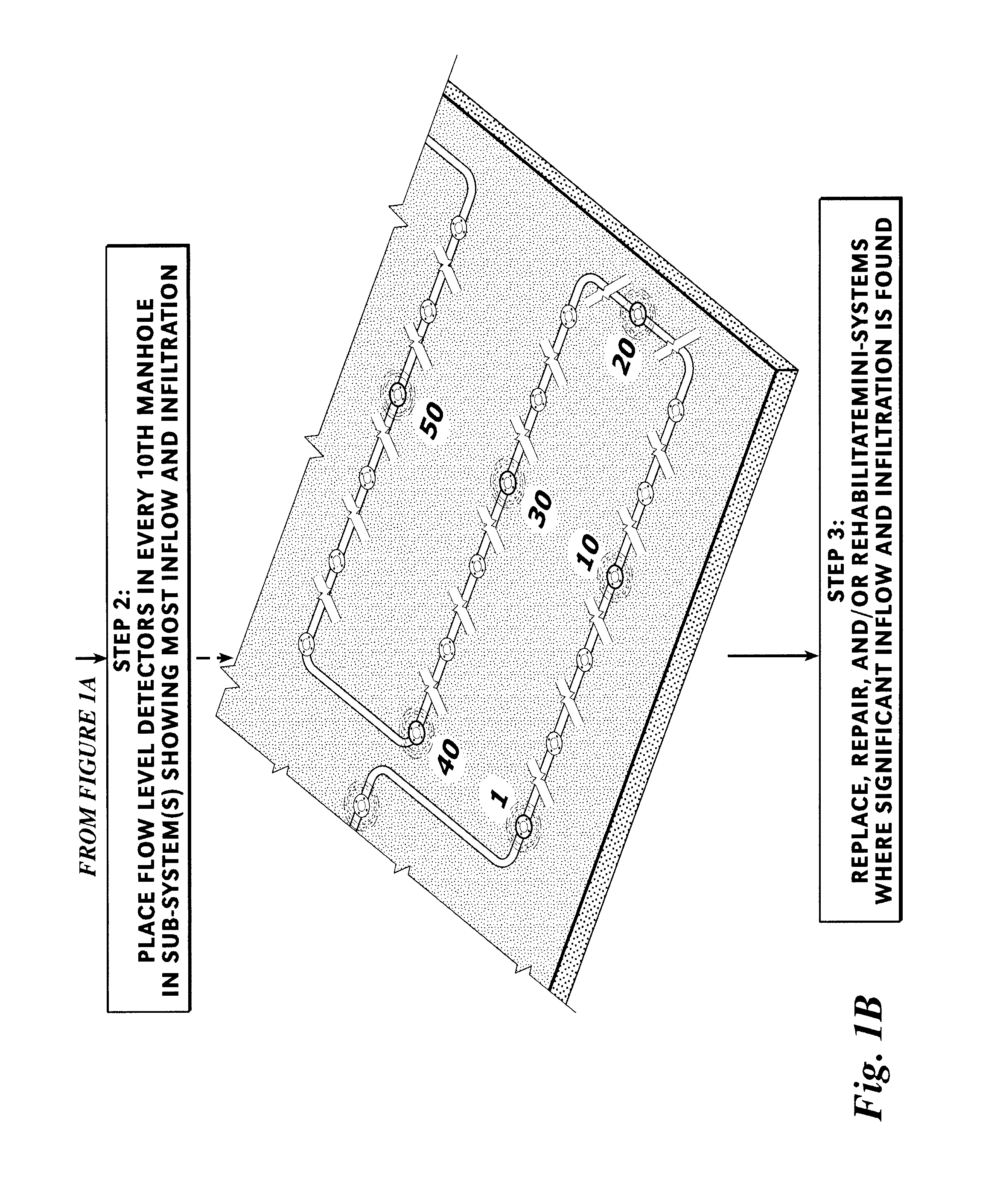Method of wastewater flow measurement, system analysis, and improvement
a wastewater and system analysis technology, applied in the direction of mechanical measuring arrangements, instruments, machines/engines, etc., can solve the problems of potential safety risks, difficult to obtain parameters with any certainty, and inability to install meters on site, so as to reduce the cost of wastewater treatment and reduce the amount of rainwater
- Summary
- Abstract
- Description
- Claims
- Application Information
AI Technical Summary
Benefits of technology
Problems solved by technology
Method used
Image
Examples
example i
[0040]
TABLE 1Report 1Inflow and Infiltration (I&I) Contribution AnalysisDELTA QSUBSYSTEM 1-8(APR. 1-JUN. 30)CALCULATIONAv. Dry Avg. Dry + Δ Q Avg. Sewer Pipe Day level Wet Day Change inSub-LengthDiameter (% Full Level (%Volume system(Ft.)(In.)Pipe)Full Pipe) Due to I&I120,0001225%33%1.67219,0001025%31%1.52322,000825%27%1.21421,0001225%27%1.14520,0001527%29%1.15624,0001828%30%1.16718,0001030%43%1.95820,000825%26%1.10
[0041]As can be ascertained from Report 1, 50% of the total inflow and infiltration is contributed by subsystems 1 and 7.
[0042]
TABLE 2Report 2Inflow and Infiltration (I&I) Contribution AnalysisSUBSYSTEM 1-8VOLUME &Av. Esti-Av. Dry +(APR. 1-JUN. 30)COST mated Dry Wet Day Avg. Avg. CALCULATIONDay Volume Volume (Qw = Cost / DayCost / YearSub-Residents (Qd) (Gal-Qd * ΔQ)Due to Due to systemServed1 lons / Day)(Gallons / Day)I&I ($)2I&I ($)21112078,800131,000$202$74,0002105073,000110,000$144$53,000391064,00077,000 $50$18,0004112183,00095,000 $46$17,0005140098,000113,000 $58$21,00061680...
example ii
[0046]
TABLE 4COMPARATIVE COST ANALYSIS SHOWING PROJECTED COSTS OF THE INVENTIVE FLOW STUDY METHOD VERSUS THE CONVENTIONAL METHODInventive Flow Conventional Flow Study Study Method(Doppler Portable Meters)Five I & I Detection $13,500Five Portable Flow $22,500Modules w / Flow Meters w / Flow Analysis Software Analysis SoftwareInstallation (5 units) $750Installation (5 units) $5,000Non-Confined SpaceConfined Space EntryYearly Maintenance $0Yearly Maintenance$48,000Contract (5 Units)($800 / Unit / Month)TOTAL COST$14,250TOTAL COST$75,000TOTAL FIRST YEAR SAVINGS$61,250TOTAL SAVINGS PER YEAR GOING FORWARD$52,250
[0047]The unique ability of the inventive method for cost-effectively locating inflow and infiltration creates the potential for ultimately reducing a municipality's wastewater treatment charges by hundreds of thousands of dollars.
example iii
[0048]
TABLE 5COST-EFFECTIVE ANALYSIS FOR REHABILITATION OF HIGHEST RANK GRID SEGMENTSSegment50%(manholeSewerPipeRemovableCosttoLengthDiam.I&I (Avg.SavingsRankingmanhole)(Ft.)(In.)Delta Q5Gal / Day)Per Year6113-151,000121.8220,000$28,324217-201,150121.5414,000$19,82635-71,100121.128,000$11,329428-30950101.075,100 $7,420POTENTIAL TOTAL COST SAVINGS OVER 10 YEARS (10 × $66,900) $669,0005Delta Q represents the average change in wastewater volume due to the effects of inflow and infiltration.6Cost Savings Per year is based upon a wastewater treatment rate of $3.88 / 1000 Gallons.
PUM
 Login to View More
Login to View More Abstract
Description
Claims
Application Information
 Login to View More
Login to View More - R&D
- Intellectual Property
- Life Sciences
- Materials
- Tech Scout
- Unparalleled Data Quality
- Higher Quality Content
- 60% Fewer Hallucinations
Browse by: Latest US Patents, China's latest patents, Technical Efficacy Thesaurus, Application Domain, Technology Topic, Popular Technical Reports.
© 2025 PatSnap. All rights reserved.Legal|Privacy policy|Modern Slavery Act Transparency Statement|Sitemap|About US| Contact US: help@patsnap.com



